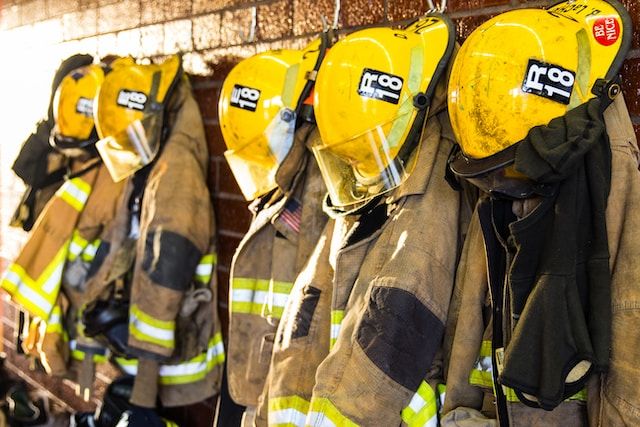
Preventing Wildfires from Bonfires: A Hot Topic
The recent surge of wildfires scorching the California landscape makes fire safety and wildfire prevention a timely topic. So does the fact that we are entering bonfire season, which can ignite a wildfire under certain circumstances.
For example, an unsupervised bonfire, a fire not totally extinguished, a bonfire made in a windy area, etc., can all cause fires.
This article focuses mostly on bonfire safety and wildfire prevention from bonfires, but several of the tips offered are applicable to campfires, as well. This definition of each will show you the main differences between the two.
Campfires are small and contained, usually in a fire pit. People use them for heating, light, cooking, and entertaining.
On the other hand, bonfires are large, controlled fires usually made for celebration. You construct them in open areas far from bushes, shrubs, and trees that could catch fire. Common spots to build them include beaches, fields, and meadows. Keeping them away from flammable wood helps control their spread and protect the surrounding environment.
Some Stats and Facts about Wildfires
- The United States now spends approximately $3 billion per year to fight fires in parks and forests.
- According to the National Park Service, nearly 85 percent of these wildland fires are caused by humans. The agency attributes “campfires left unattended, the burning of debris, negligently discarded cigarettes and intentional acts of arson” as the primary causes of these wildfires.
- According to The Washington Post, amid record-breaking heat waves, larger and longer wildfires, and a mega-drought, many fire officials are limiting or prohibiting campfires. The U.S. Forest Service says these factors caused 30 percent of wildfires over the past decade.
- From 2012 to 2021, there were an average of 61,289 wildfires annually and an average of 7.4 million acres impacted annually. In 2021, 58,968 wildfires burned 7.1 million acres.
- As of September 2, 2022, nearly 48,500 wildfires have impacted about 6.2 million acres this year.
Let's take a closer look at bonfire safety and wildfire prevention to increase awareness as well as provide guidance to follow if an accidental fire occurs.
How to Prevent a Bonfire from Becoming a Wildfire
According to The Hanover Insurance Group, the following are tips for preventing bonfires from getting out of control:
- Check the weather. Never build a bonfire on a high-wind night.
- Make sure the area where you start your bonfire is a legal location. Check your state’s laws and regulations about fires before you start one.
- Keep buckets of water or a garden hose nearby in case the fire begins to spread. It is important to be prepared in case of emergency.
- Keep a close eye on the bonfire as well as any children nearby. This will help protect others around you.
- Do not burn aerosols, canisters, or anything containing foam or paint. These types of chemicals have extremely flammable ingredients that can cause fire to spread or produce toxic fumes. Containers of these products could explode, causing injury.
- Ensure the wood you are burning is dry, seasoned, and non-toxic. This means no railroad ties, nothing coated or treated, and no furniture should be thrown in the fire.
- The pile shouldn't be bigger than 5' x 5' to keep the flames containable.
- After the bonfire is done, turn over the charred materials with metal shovels and rakes and douse the area with water.
- Wear non-flammable clothing when starting, sitting by, or extinguishing the fire. Wear hard-soled shoes instead of rubber sneakers or flip-flops, as leaping sparks could cause them to ignite.
- Keep an eye on alcohol consumption. If you and your guests are enjoying an adult beverage or two around the bonfire, be mindful of your consumption. Too much alcohol can lead to clumsiness and careless behavior, such as getting too close to the fire or tossing in the wrong items.
What to do if a bonfire gets out of control
If you find yourself in this situation, then there are a few steps you can take — first, try to extinguish the fire as quickly as possible by pouring as much water as you can on the flames and stamping out any embers that build up.
If it looks like the fire is spreading quickly in one direction, and it doesn't look like you can stop it outright, then move on a bit in that direction and work to clear any flammable material out of the fire's path. When the fire then reaches that point, this may give you a better angle to tackle it again. If things reach this point, however, you should delegate someone to phone the emergency services.
Work in two main teams if you can, one group moving children and people to safety, then ideally your belongings to safety — and the second working to extinguish the fire.
The group moving things to safety can join the first group in extinguishing the fire when their task is complete.
It's also worth remembering, on the practical side of things, how you address people can make all the difference. Delegate swiftly, efficiently, and firmly. Give people instructions by name.
Hopefully, you'll find these tips useful to keep bonfires from getting out of hand and the knowledge of what to do if the fire spreads out of control.
Research and materials for this article were compiled, written, and distributed on behalf of the National Public Health Information Coalition. The views and opinions expressed in this blog are those of the various authors and do not necessarily reflect the official policy or position of the National Public Health Information Coalition or its members.
References:
https://outforia.com/bonfire-vs-campfire/
https://lnt.org/why/problems-we-solve/destructive-fires/
https://www.washingtonpost.com/nation/2022/09/18/campfires-extreme-weather/

